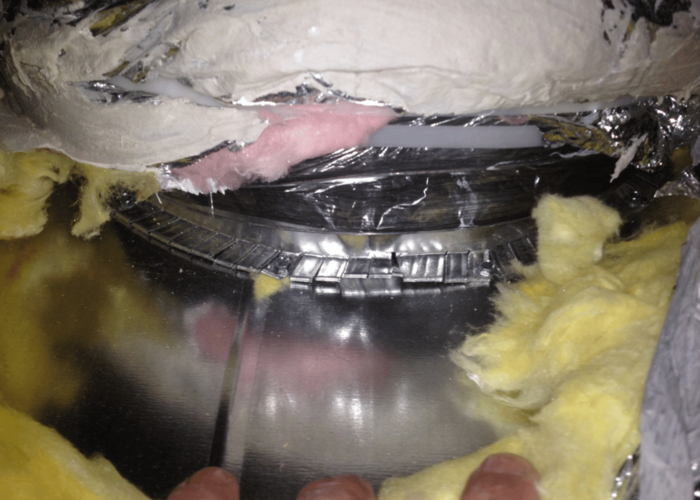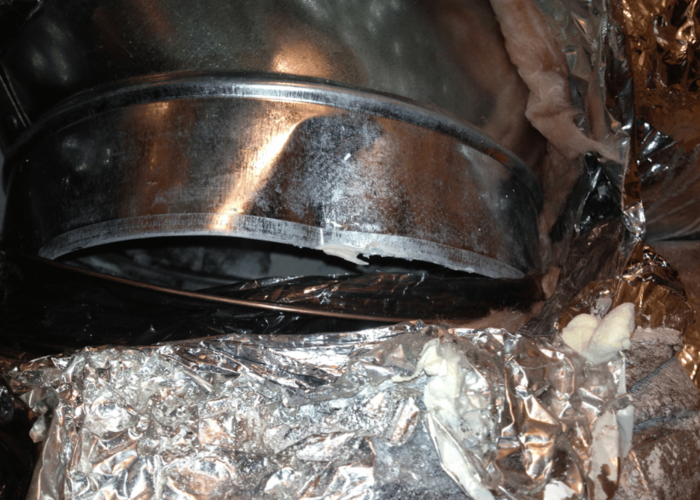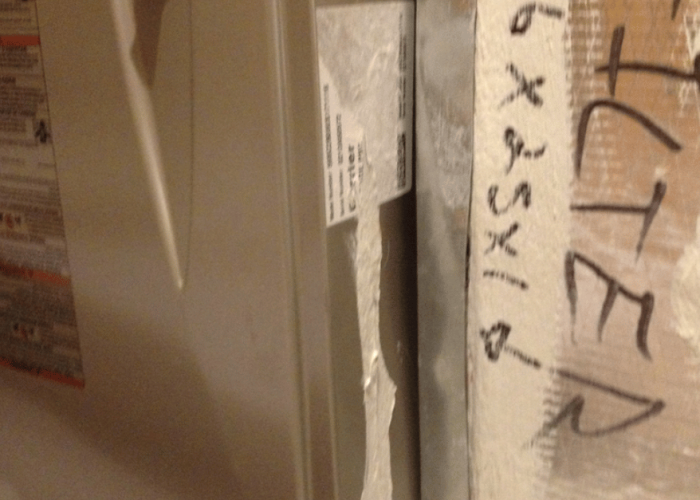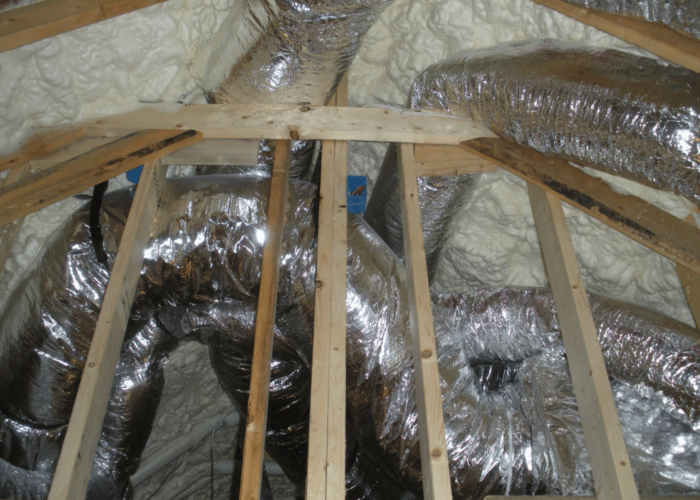14 Apr Can’t Anyone Get Things Right?




Note: Originally posted by Carl Seville on Green Building Advisor.
Smearing mastic in the wrong place
Notice the nice layer of mastic on the insulation, but nothing where the collar connects to the plenum.
In my business of certifying buildings, most of my work involves working with architects, contractors, and trade contractors who are trying to create green buildings. Unfortunately, they frequently miss the mark in some key areas.
Many of them are well intended but don’t have a broad enough view of their projects. Others only do the minimum required to meet a green building standard forced on them by someone else. And a few, thankfully, seem to get it and work hard to do the right things.
This post, the first in a series about problems I run across, will focus on HVAC (Heating, ventilation, and air conditioning). Collectively, the mechanical systems that heat, ventilate, and cool a building..
Loads of problems with loads
All green certification programs require Manual J load calculations, and some also require Manual D duct designs. I review these reports to make sure that they meet program requirements and match the building, and in almost all cases they do neither.
In most cases I think the problems are due to ignorance or inexperience, although I have seen loads that I believe were intentionally altered to justify installing an oversized system that an HVAC contractor wanted to sell. One easy way to bump up a load is to add in excessive internal loads. I once saw a report that showed about 25 people living in a house; that made it look like the house needed about twice as much cooling capacity as it really did.
On several projects, once the loads were corrected, the contractor was able to reduce total system size significantly, ultimately saving money and improving efficiency and comfort.
Mastic, mastic everywhere, but not a leak is sealed
Once we get past the hurdle of properly sizing HVAC systems, there is still the challenge of proper installation. Proper duct installation and sealing is an ongoing problem.
I have seen installers who love to slap on the mastic — but unfortunately, they put most of it on the insulation, with little or none used to seal the actual duct connections. Once I manage to hack my way through the hardened mastic on the insulation to look at the collars and wyes, there is usually little if any mastic on the actual duct connections.
I always recommend that HVAC installers do not put any mastic on the insulation — or, if required by their inspectors, to do so only after the internal duct connections are inspected for proper sealing. I’m still waiting for someone to listen to me.
Giving me fits
Beyond problems with duct sealing, I see far too many flex ducts jammed into spaces where they don’t fit, installed between roof rafters and twisted into pretzel-like shapes.
For those projects that require a Manual D, many installers choose to ignore the design. Or in some cases the design won’t work with the structure, and they are required to redesign in the field.
One big issue when testing duct systems for total leakage is sealing of HVAC boots to walls and floors. Some programs require this sealing, but the work is too often forgotten.
And my least favorite installation, kick space registers in kitchens, are more often than not simply dumped into the cabinet base rather than being sealed to the toe kick, leading to significant duct leakage.
Location, location, location
The most consistent HVAC problem, particularly here in the South, is locating ducts in unconditioned attics. This is the responsibility of the architect or the builder.
This practice has been lamented on GBAGreenBuildingAdvisor.com and throughout the industry for many years, but there just hasn’t been that much progress, although some builders are moving to spray foam roof-lines to bring the HVAC into conditioned space. While this is a better solution, I just can’t get over the feeling that this is a late response to a poor design. Why not just plan to install ducts inside the building envelopeExterior components of a house that provide protection from colder (and warmer) outdoor temperatures and precipitation; includes the house foundation, framed exterior walls, roof or ceiling, and insulation, and air sealing materials. and have a regular old unconditioned attic? It would cost less and work as well or better that the alternatives.
Dreaming of a job without problems…
Someday I would really like to get through an inspection and find nothing wrong, but I am not keeping my hopes up. Looking on the bright side, the constant need for inspections and corrections suggests good job security for the near future.



No Comments